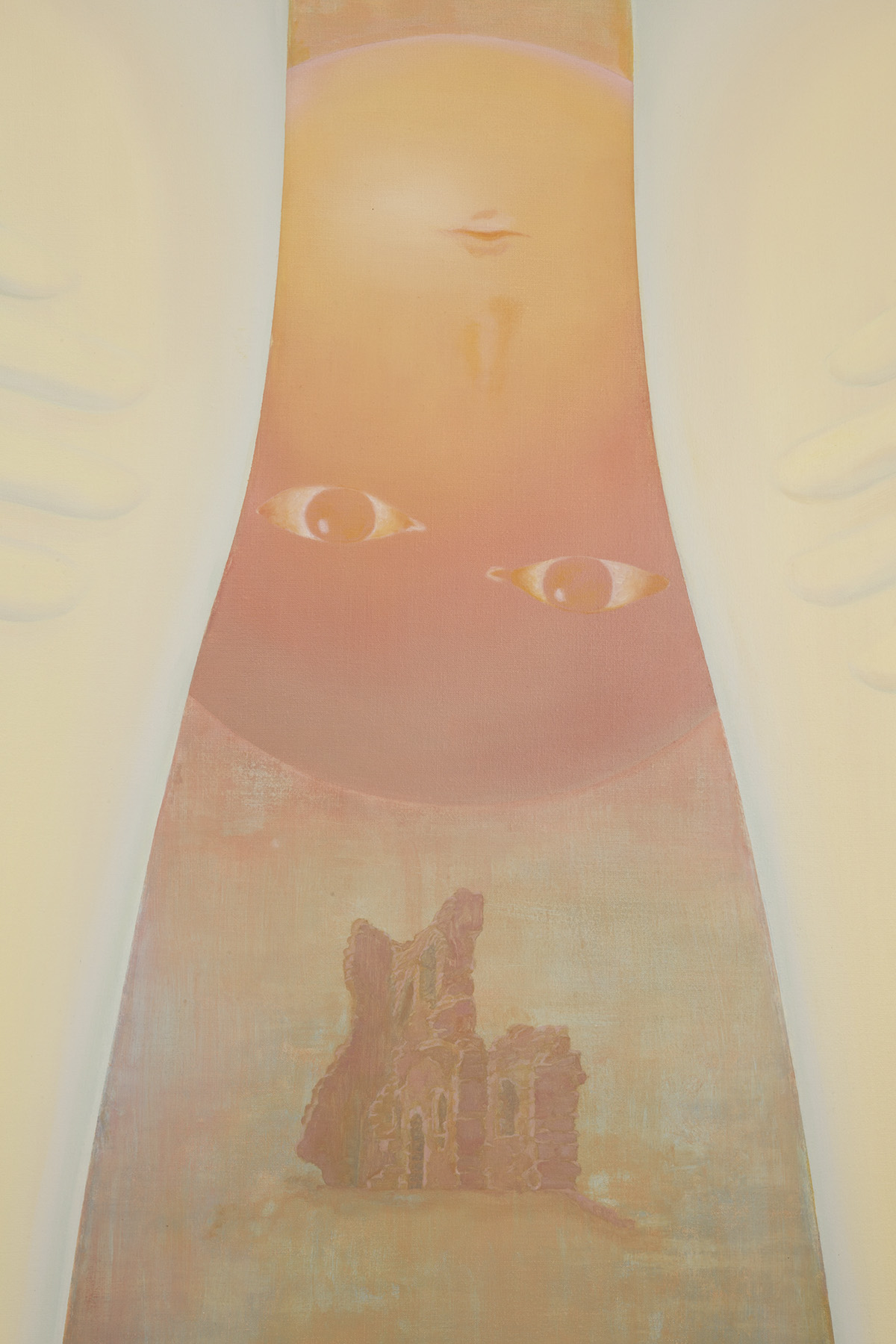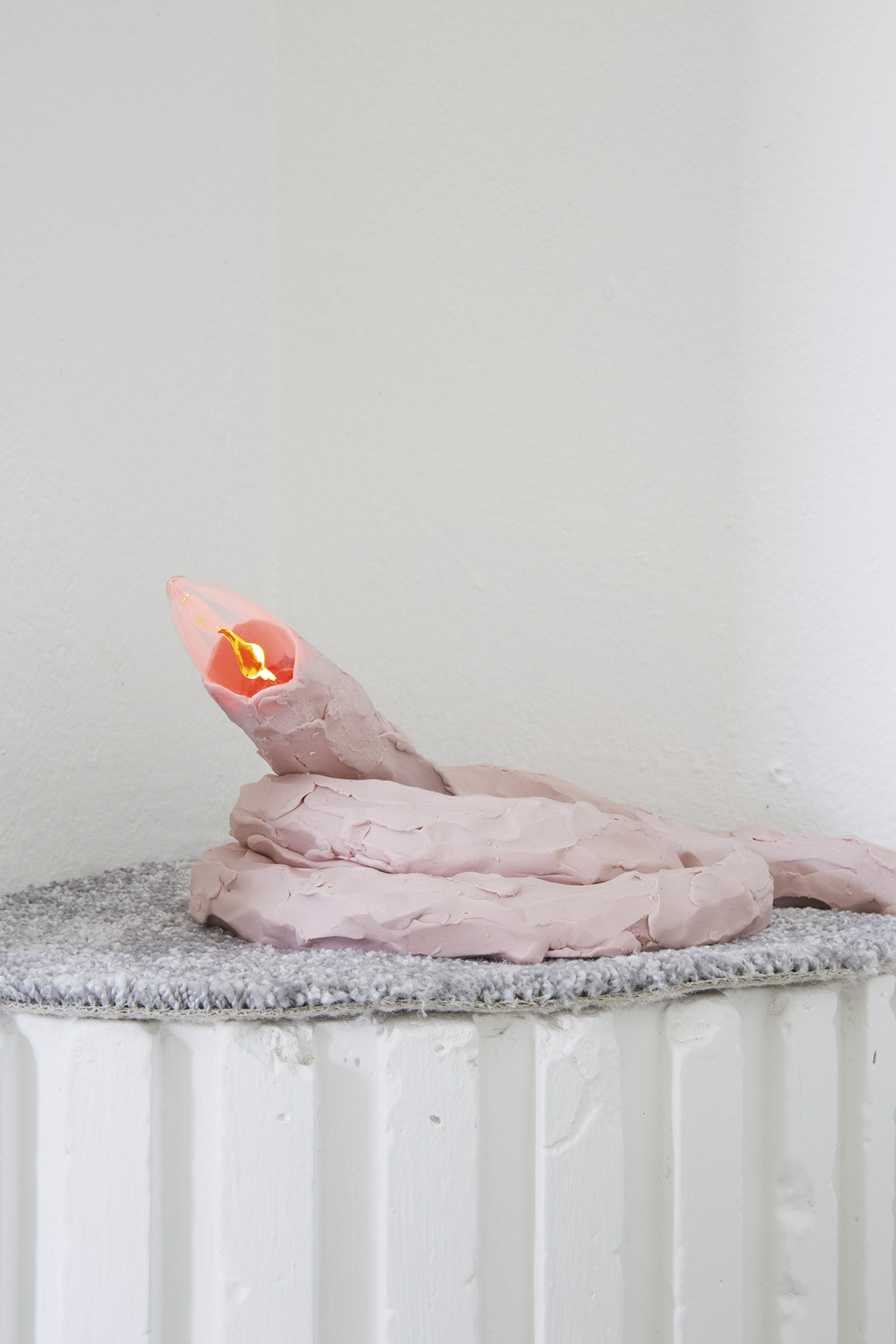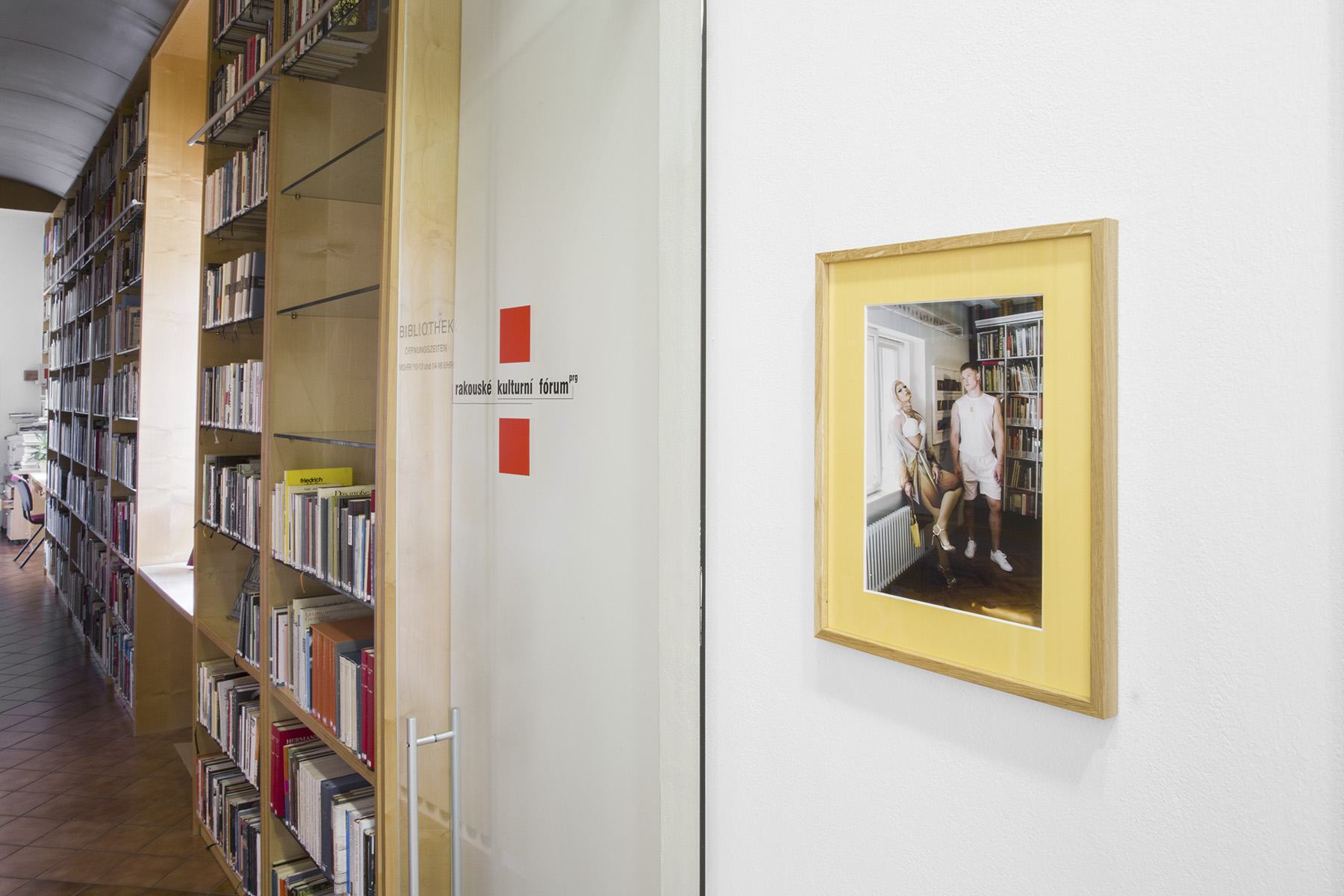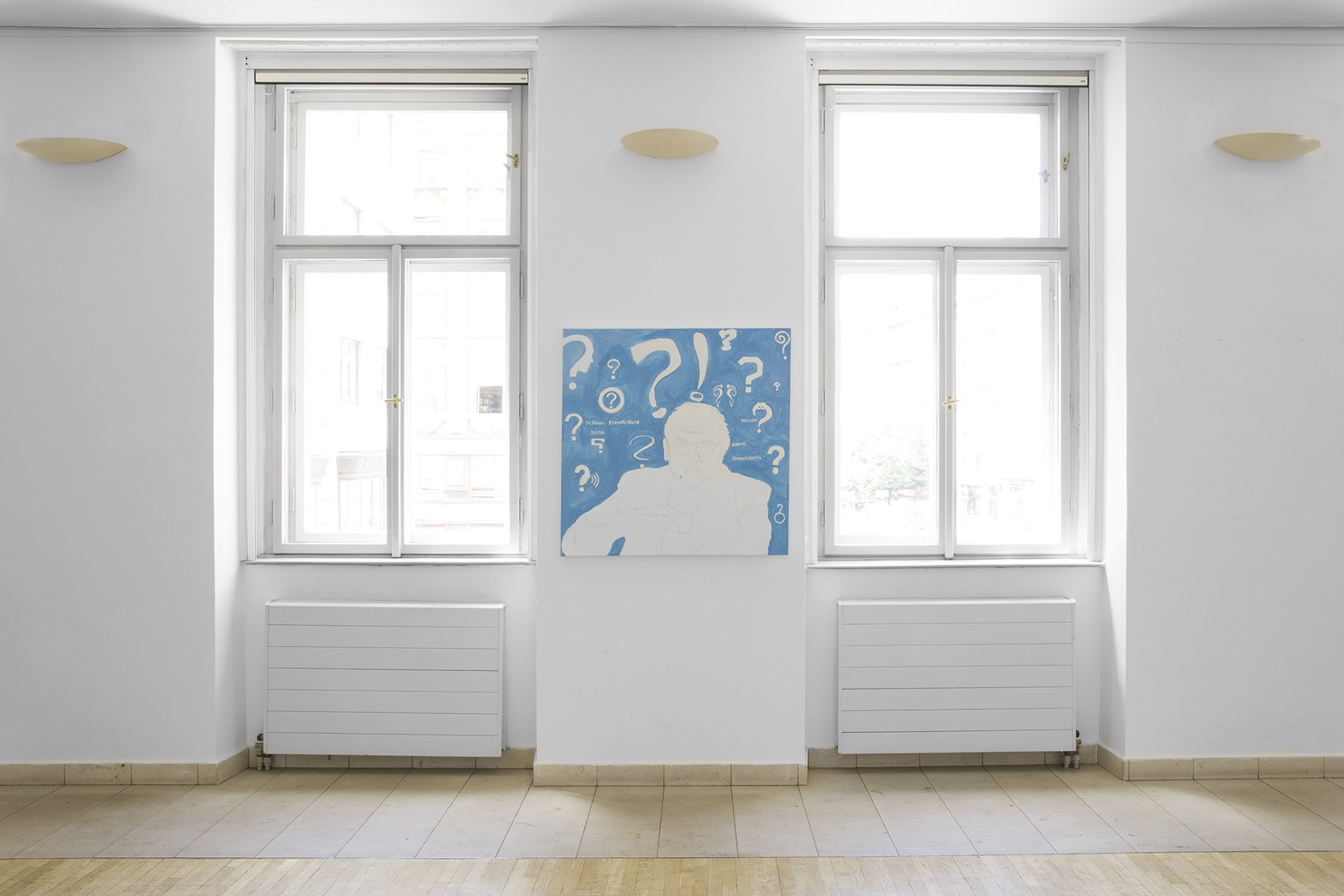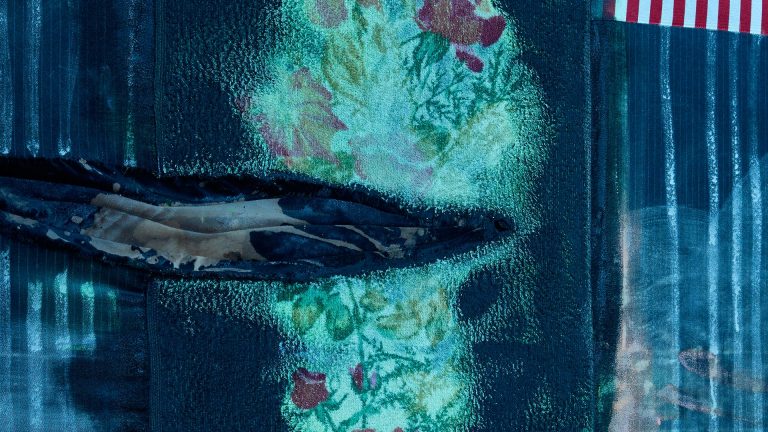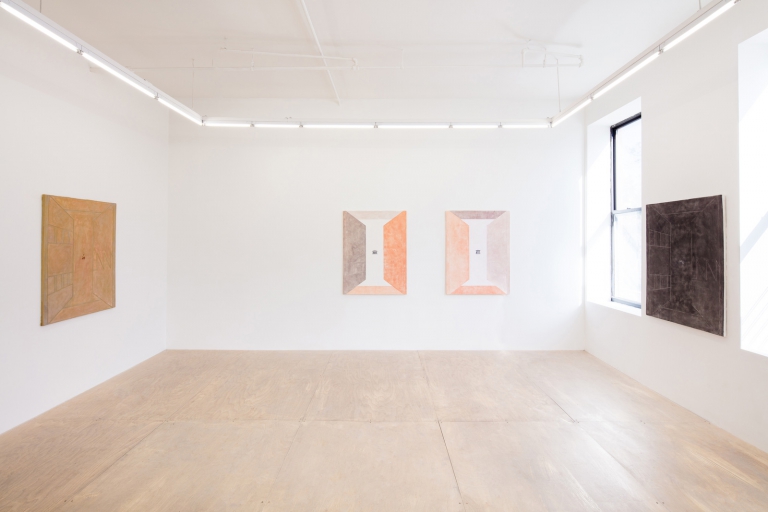Artists: Anetta Mona Chisa, Lucie Tkáčová, Josef Dabernig, Rudolf Prohazka, Melanie Ebenhoch, Barbara Kapusta, Barbara Kleinhamplová, Stanislav Kolíbal, Axel Koschier, Elke Krystufek, Jimena Mendoza, Lukas Thaler, Philipp Timischl, Kateřina Vincourová, Thomas Geiger, Jiří Kovanda
Exhibition title: Fauxthenticity
Curated by: Significant Other (Laura Amann & Jen Kratochvil)
Venue: The Austrian Cultural Forum, Prague, The Czech Republic
Date: May 22 – September 10, 2019
Photography: all images copyright and courtesy of the artists, Significant Other and The Austrian Cultural Forum, Prague
Living in the days of “alternative facts”, a term famously attributed to U.S. Counselor to the President Kellyanne Conway, we are getting used to the peculiar sensation of not-believing almost anything we hear from the media and those in power. This attitude culminates in a psychological state called “compassion fatigue”, which simply put means, that we are not able to empathize with all the heart-wrenching and scary news of the day, firstly because we can’t keep up with their overwhelming rate and secondly due to the seeming impossibility of discerning truth from faux.
#fauxfilter
Faux being French for false is in essence used as a euphemism – making something that in truth is false seem acceptable or even desirable. Faux marbre or faux bois are known to have been more valuable than the actual materials at the height of their popularity as a decorative ersatz-material in architecture. Faux fur and faux leather, once perceived as cheap and in bad taste have regained a new status and popularity amongst flourishing vegan, eco- and animal friendly tendencies. In this sense Fauxthenticity denotes the results of making something false appear true. A term mostly used when speaking about PR strategies or representation in social media it seeks to combine the best of two worlds – at least for those of us savvy enough to apply this strategy – namely merging something that is interesting yet unprofitable with something cheaply produced yet boring. Cause deep down we all seek authenticity… with a tiny little upgrade.
#fauxfreckles
Mary Starks Whitehouse developed the exercise of Authentic Movement out of her practice as a modern dancer as well as her interest in Jungian theory. Her methodology requires a dancer and a witness to enter into a mutual relationship of trust, safety and intimacy. A reciprocal and interdependent exchange happens as the dancer explores unconscious impulses, sensations and emotions expressed in movement in the presence of the witness, who on their part is seeking to actively observe and become aware of personal projections and judgments. In doing so, both are increasing their own awareness either as inner or outer witnesses, shedding preconceived notions, insecurities and judgements. But can you ever really dance as if nobody was watching?
#fauxpas
During the self-proclaimed “Debate of the Century” aka “Clash of the Intellectual Titans” between Jordan Peterson and Slavoj Žižek this April in Toronto, the Slovenian thinker described our current state with a colorful metaphor. “There is a light at the end of the tunnel, but only too late we realize that it’s a train heading in our direction, leaving us with no chance of escape.”
#fauxfinish
If we go back in time to the days which brought us the death of history, the fall of grand narratives, the praise of subjectivity and therefore also a bit of confusion about what truth actually is. Let’s look at the 1970s, the inception of all we, later on, used to define as post-modern. And let’s use one specific example, “F for Fake,” the last opus of “boy wonder” Orson Welles from 1974 (at least the last one he saw to be released). In this quasi-documentary Welles presents his audience with a layered story of frauds, fakes, and deceptions; celebrating and immortalizing them, showing his mastery even in the minor of his works and inventing a new genre en passant. Welles himself though being a prototypical agent of the concept of male genius, got beat by a mile by feminist criticism for the inherent sexism in his work. So far, for many this would have been understood as a mere detail among all of his achievements, today it has become a critical aspect of our ‘truth’.
#fauxlex
Our state of late capitalism catapulted the role of the precarious worker into absurdity. While the traditional structure of labor was based on regular working hours and provision of social and health security, same as potential benefits, more and more people have to get used to a state of working without any boundaries – day and night – on short-term gigs, while continuously searching for the next one. Such a situation still lacks proper anchoring in the system, and thus whole generations are reaching the point of early burn-outs in unsustainable conditions while defying traditional organization of society into families because there is simply no time to allow yourself such a luxury. On the other hand, those unfit to function in the constant race of freelance lives, are suffering through technical optimization of their working routine, being chased by surveillance technology on every step, transforming themselves rather into machines than staying human.
#fauxhemian
No-one is taking away your hamburgers – or “Wiener Schnitzel” or “svíčkovás” for that matter – you can still fly, but isn’t there almost always a more conscious choice possible such as taking the train or eating more responsibly? John Oliver poignantly said in one his latest shows: “our main current low carbon technology strategy is to wait till Elon Musks stops calling people pedophiles long enough to invent an affordable electric car”. Are we really waiting for the authorities to solve our problems for us.
#fauxtatoes
“To say of what is that it is, or of what is not that it is not, is true.” What sounds like an inspirational quote in a Shakespearean formulation is actually a phrase attributed to Aristotle and while the idea of simply sticking to the ‘facts’ in a world which by default provides us with the truth, appeals to our common sense, we have to realize that this phrase is not much more than a platitude, because “facts” are strange entities that in essence are nothing else than beliefs. And while there exist processes of verifying beliefs, they only unravel further systems of belief that people take to be true – so it is not the world or the facts that tell us what to believe but how we interpret, select and conceptualize facts. In this sense: “Way to go Kellyanne!”
#fauxfacts
Kateřina Vincourová, “Three Graces”, 2016
from left to right: Elke Silvia Krystufek: Like nothing you have ever seen (Zoe Leonard), 1999; Jimena Mendoza: Model #1, 2017; Kateřina Vincourová: Sorceress for Peace, 2016; Barbora Kleinhamplová: Work Arrangements, 2018; Stanislav Kolíbal: Three ways (Trio) 1968; Melanie Ebenhoch: Untitled (Sun), 2019; Anetta Mona Chisa & Lucie Tkáčová: yYYyYyyYYYYyYy, 2017, Manifesto of the Liberated Pixel, 2017; Jimena Mendoza: Model #2, 2017; Barbara Kapusta: Empathic Creatures, 2018
Anetta Mona Chisa & Lucie Tkáčová: yYYyYyyYYYYyYy, 2017; Jimena Mendoza: Model #2, 2017, Model #1, 2017
Jimena Mendoza: Model #2, 2017
Stanislav Kolíbal: Three ways (Trio) 1968; Melanie Ebenhoch: Untitled (Sun), 2019; Anetta Mona Chisa & Lucie Tkáčová: yYYyYyyYYYYyYy, 2017, Manifesto of the Liberated Pixel, 2017
Melanie Ebenhoch: Untitled (Sun), 2019 (detail)
Lukas Thaler: Lamp 2019 (limp), Lamp 2019 (mellow), Lamp 2019 (soggy); Josef Daberning: Interferences between handwritten copies and the original book of Vittorio Gregotti “Il territorio dell’architettura“, Campi del sapere/Feltrinelli, Milan, 1988 (first edition in the series “Materiali“ 1966), 1999
Lukas Thaler: Lamp 2019 (limp), (detail)
Jimena Mendoza: Model #1, 2017; Kateřina Vincourová: Sorceress for Peace, 2016; Barbora Kleinhamplová: Work Arrangements, 2018
Barbora Kleinhamplová: Work Arrangements, 2018
Anetta Mona Chisa & Lucie Tkáčová: yYYyYyyYYYYyYy, 2017; Philipp Timischl: Artworks For All Age Groups, 2018; Jimena Mendoza: Model #2, 2017, Model #1, 2017, Barbara Kapusta: Empathic Creatures, 2018
Philipp Timischl: Artworks For All Age Groups, 2018
Melanie Ebenhoch: Paulina, 2018
Melanie Ebenhoch: Paulina, 2018, (detail)
Axel Koschier (the patio door) Untitled, 2019
Lukas Thaler: Lamp 2019 (chewy), Lamp 2019 (squashy) (detail)
Melanie Ebenhoch: Untitled (Moon), 2019
Philipp Timischl: Artworks For All Age Groups, 2018
Elke Silvia Krystufek: Rhakat Aliyev, 2017
Josef Dabernig & Rudolf Prohazka: Handwritten copies of contents of unknown source on the phenomenon of reflection, 1995, Xerox copy of the handwritten copy of contents of unknown source on the phenomenon of reflection, 1995, Xeroxed sheets of STUDIA LEIBNITIANA SUPPLEMENTA, Volume VIII – point of view influenced by consciousness and global context – The picture of the live mirror of Leibniz and its importance for Goethe’s work, from Jürgen Nieraad, published by Franz Steiner Verlag GmbH, Wiesbaden 1970, p. 118-136), Hagenbrunn path, 1995; Axel Koschier: (trousers, for now doesn’t matter which ones) Untitled, 2019
Josef Dabernig & Rudolf Prohazka: Xeroxed sheets of STUDIA LEIBNITIANA SUPPLEMENTA, Volume VIII – point of view influenced by consciousness and global context – The picture of the live mirror of Leibniz and its importance for Goethe’s work, from Jürgen Nieraad, published by Franz Steiner Verlag GmbH, Wiesbaden 1970, p. 118-136), 1995 (detail)
Axel Koschier: (trousers, for now doesn’t matter which ones) Untitled, 2019 (detail)







